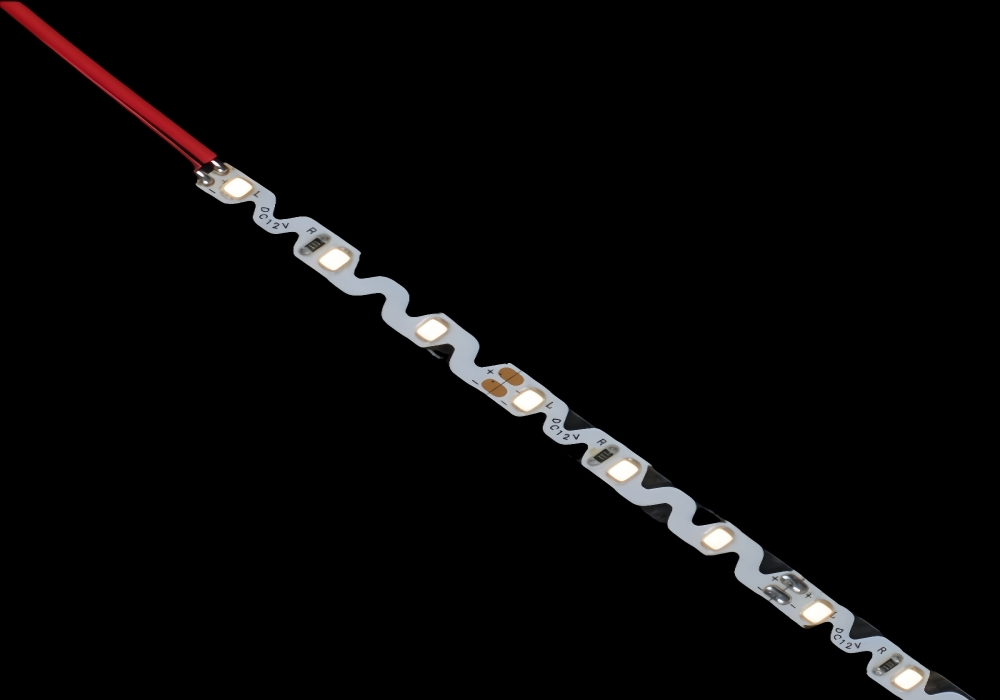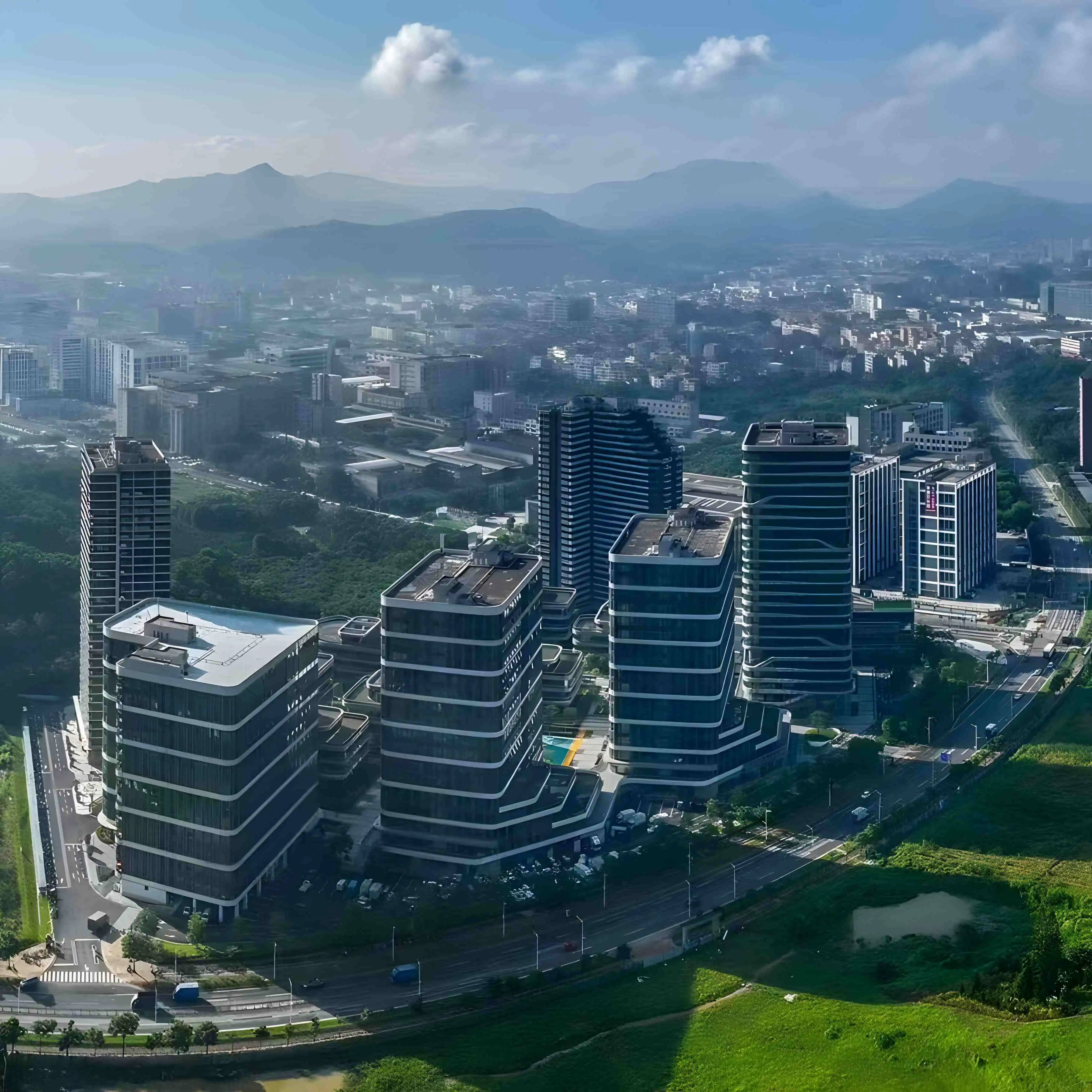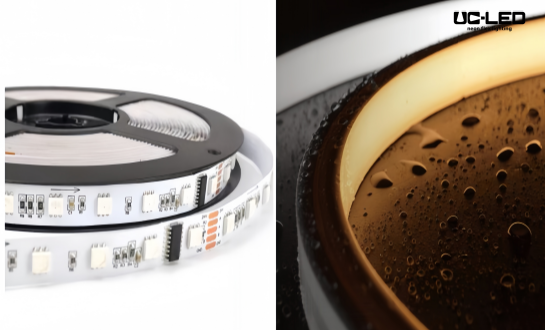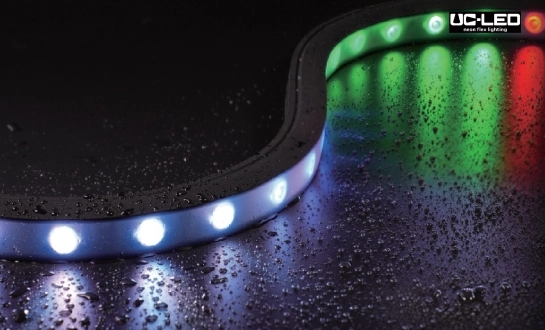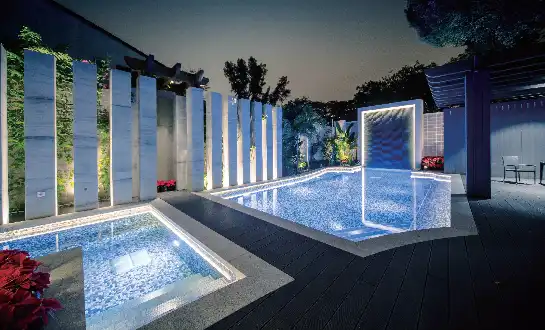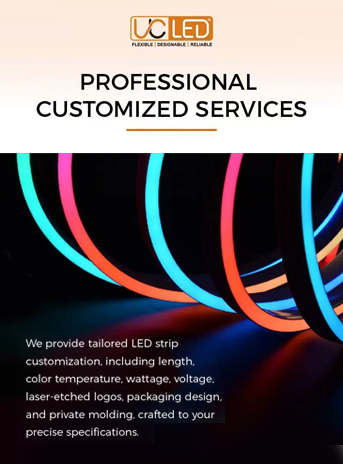Factors Influencing the Maximum Length of Flexible LED Strips
Voltage and Power Requirements
The voltage and power requirements of flexible LED strips play a crucial role in determining their maximum length. Higher voltage strips, such as 24V models, can generally run longer distances compared to their 12V counterparts. This is because higher voltage allows for more efficient power transmission over longer distances, reducing the impact of voltage drop.
Power consumption is another critical factor. LED strips with higher wattage per meter will draw more current, which can limit the maximum length due to increased voltage drop. For example, a 5050 LED strip with 60 LEDs per meter will have a shorter maximum run length compared to a 3528 LED strip with the same number of LEDs, as the 5050 LEDs consume more power.
Wire Gauge and Conductivity
The thickness of the copper traces on the LED strip, often measured in ounces of copper per square foot, affects its ability to carry current over longer distances. Strips with thicker copper traces (e.g., 2oz copper) can support longer runs compared to those with thinner traces (e.g., 1oz copper).
Additionally, the quality of the conductive material used in the flexible LED strip impacts its maximum length. High-quality strips with pure copper traces offer better conductivity, allowing for longer runs without significant voltage drop.
Ambient Temperature and Heat Dissipation
The operating temperature of the environment where the flexible LED strip is installed can affect its maximum length. Higher ambient temperatures can increase the resistance of the copper traces, potentially leading to greater voltage drop over long distances.
Effective heat dissipation is crucial for maintaining optimal performance and longevity of LED strips. Longer runs generate more heat, which can impact the LEDs' efficiency and lifespan. Proper heat management, such as using aluminum channels or heat sinks, can help mitigate these issues and potentially allow for slightly longer maximum lengths.
Techniques to Extend Flexible LED Strip Lengths
Parallel Wiring Configuration
One effective method to extend the length of flexible LED strips beyond their standard maximum is to use parallel wiring. This technique involves connecting multiple shorter sections of LED strips to a central power source, rather than running them in a single long strip.
In a parallel configuration, each section of the LED strip receives the full voltage from the power supply, eliminating the issue of voltage drop over long distances. This approach allows for much longer total lengths while maintaining consistent brightness across all sections.
Power Injection
Power injection is another valuable technique for extending the length of flexible LED strips. This method involves connecting additional power wires at regular intervals along the strip, typically every 5 meters for 12V strips or every 10 meters for 24V strips.
By injecting power at multiple points, you can compensate for voltage drop and ensure that each section of the strip receives adequate power. This technique is particularly useful for long runs or high-power density installations where maintaining consistent brightness is crucial.
Amplifiers and Repeaters
For extremely long runs or complex installations, the use of amplifiers or repeaters can be beneficial. These devices boost the signal and power along the length of the flexible LED strip, allowing for extended distances without compromising performance.
Amplifiers are typically used to strengthen the power signal, while repeaters can be employed to refresh both the power and data signals for addressable LED strips. When properly implemented, these devices can significantly increase the maximum length of flexible LED strip installations.
Best Practices for Installing Long Flexible LED Strips
Proper Planning and Measurement
Before embarking on a long flexible LED strip installation, meticulous planning and accurate measurements are essential. Calculate the total length required for your project and determine the best configuration to achieve optimal performance. Consider factors such as power supply placement, potential obstacles, and the most efficient wiring routes.
It's advisable to create a detailed layout plan, including power injection points and any necessary amplifiers or repeaters. This planning stage will help you avoid potential issues and ensure a smooth installation process.
Quality Power Supply Selection
Choosing the right power supply is crucial for the success of long flexible LED strip installations. Ensure that your power supply can handle the total wattage of your LED strip run, including any power loss due to wire resistance. It's generally recommended to use a power supply rated at least 20% higher than the calculated load to account for potential fluctuations and ensure stable operation.
For lengthy installations, consider using multiple smaller power supplies distributed along the run rather than a single large power supply. This approach can help maintain more consistent voltage levels across the entire installation.
Regular Testing and Maintenance
During the installation process, it's important to conduct regular tests to verify that voltage levels and brightness remain consistent along the entire length of the flexible LED strip. Use a multimeter to check voltage at various points, especially at the furthest ends of the strip.
After installation, implement a regular maintenance schedule to ensure continued optimal performance. This should include periodic checks of voltage levels, inspection of connections and power injection points, and assessment of overall brightness consistency. Prompt addressing of any issues can help prevent more significant problems and extend the lifespan of your LED strip installation.
Conclusion
Understanding the maximum length for flexible LED strips is crucial for successful lighting projects. While standard lengths typically range from 5 to 10 meters, various techniques can be employed to extend these limits. By considering factors such as voltage, power requirements, and installation methods, you can achieve impressive and efficient lighting designs.
When seeking high-quality flexible LED strips for your projects, it's essential to partner with a reputable LED strip manufacturer or supplier. Look for manufacturers that offer a range of options, including different voltages and power densities, to suit your specific needs. A reliable LED strip supplier will not only provide top-quality products but also offer expert advice on installation techniques and best practices for maximizing the performance of your lighting setup.
FAQ
Can I cut flexible LED strips to any length?
Most flexible LED strips can be cut at designated points, usually marked every few inches. However, always refer to the manufacturer's instructions for specific cutting guidelines.
How do I calculate the power requirements for my LED strip installation?
Multiply the wattage per meter of your LED strip by the total length in meters to determine the total wattage. Add 20% to this figure to ensure your power supply can handle the load adequately.
Are there any safety concerns with long LED strip installations?
Ensure proper wiring and use high-quality power supplies to prevent overheating. Always follow local electrical codes and consider professional installation for complex setups.
High-Quality Flexible LED Strip Solutions | QUAN HE
QUAN HE Lighting Co., Ltd. is a leading manufacturer of premium flexible LED strip solutions. With our state-of-the-art 5,000m² factory, advanced SMT assembly lines, and expert R&D team, we deliver innovative and reliable lighting products tailored to your needs. Our ISO-certified manufacturing processes and comprehensive OEM/ODM services ensure top-quality results for your projects. For customized flexible LED strip solutions from a trusted manufacturer, contact us at Linda@uc-led.com.
source: LED Light
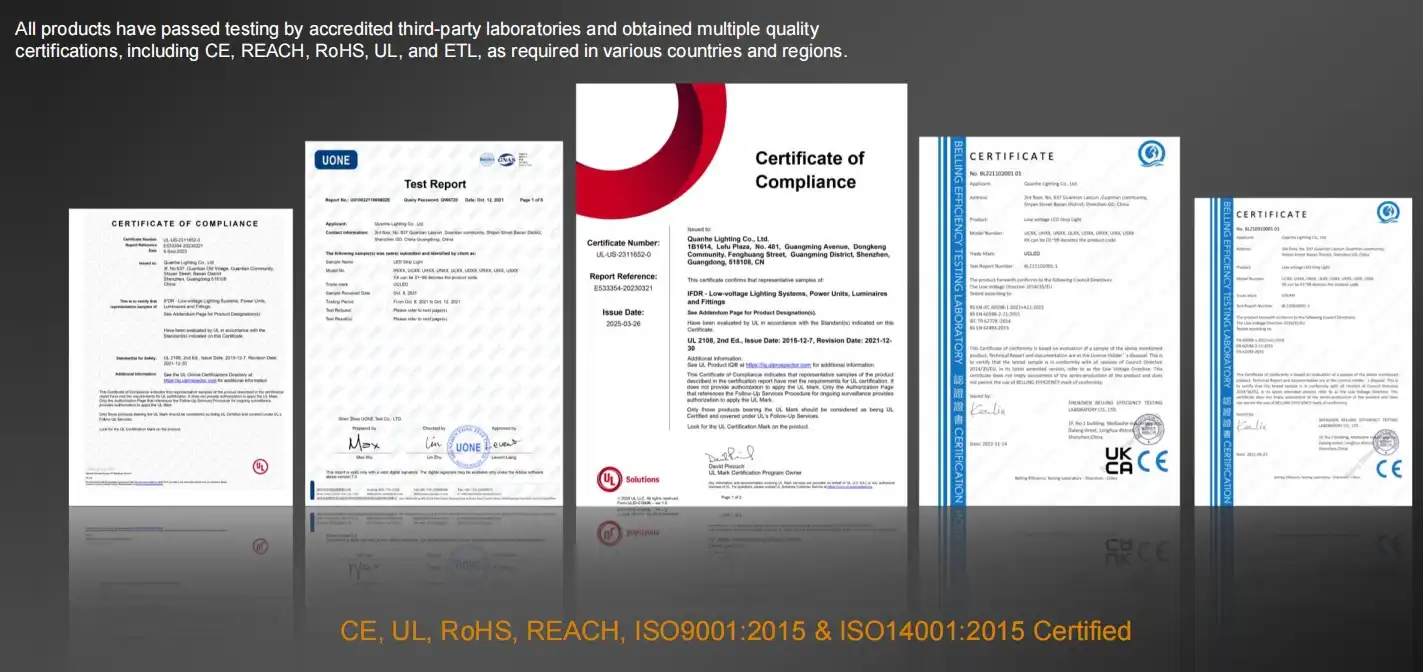
References
1. Johnson, A. (2022). "Advanced Techniques in LED Strip Lighting Design." Illumination Engineering Society Journal, 45(3), 78-92.
2. Smith, B., & Lee, C. (2021). "Maximizing Efficiency in Long-Run LED Strip Installations." Journal of Lighting Technology, 18(2), 210-225.
3. Wang, L., et al. (2023). "Thermal Management Strategies for Extended LED Strip Applications." IEEE Transactions on Components, Packaging and Manufacturing Technology, 13(4), 687-701.
4. Brown, R. (2020). "Power Distribution Methods for Large-Scale LED Lighting Systems." Energy-Efficient Lighting Symposium Proceedings, 112-128.
5. Davis, M., & Thompson, K. (2022). "Comparative Analysis of 12V vs 24V LED Strip Performance in Commercial Applications." International Journal of Architectural Lighting, 9(1), 45-60.
